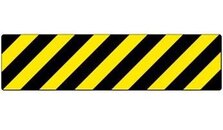@Diver0001 and
@Fastmarc
Thanks for the clarification. As mentioned, one of my objectives is to try to optimize a technique to emphasize important text in a paragraph. Example let's say you want to quote the following:
All divers should remember to never block their airway when ascending on Scuba. It could cause AGE (Arterial Gas Embolism).
At first blush, a person might choose to use red text because red is classic for warnings.
All divers should remember to never block their airway when ascending on Scuba. It could cause AGE (Arterial Gas Embolism).
I now understand that is problematic for a large percentage of color blind people because red is the most common deficiency. Using bold in addition to color is an option but it may be "shouting" more than desired, and will obscure the original bold text. Example:
All divers should remember to never block their airway when ascending on Scuba. It could cause AGE (Arterial Gas Embolism).
Perhaps changing the font would be more effective for everyone:
All divers should remember to never block their airway when ascending on Scuba. It could cause AGE (Arterial Gas Embolism).
Any thoughts?




